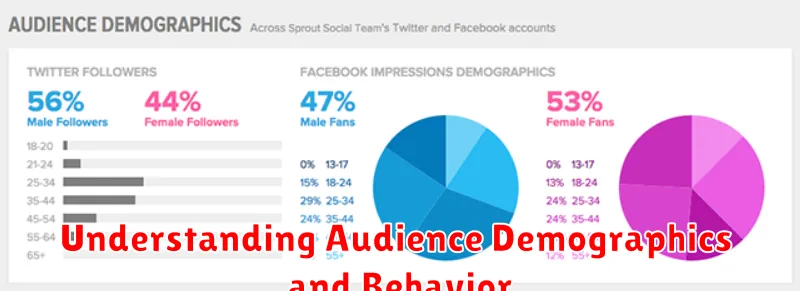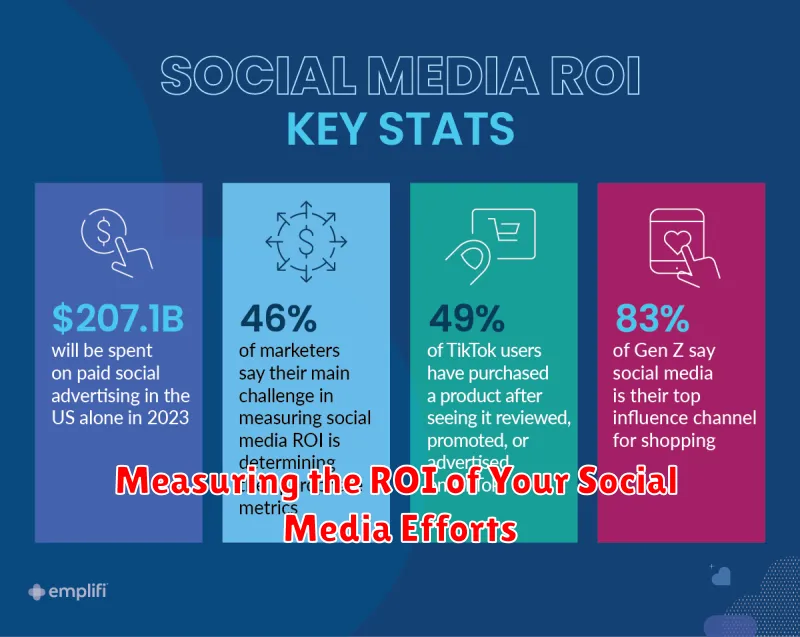In today’s digital landscape, social media has become an indispensable tool for businesses and individuals seeking to expand their reach and influence. However, simply having a presence is not enough. To truly thrive, it is essential to adopt a data-driven approach. This involves delving into social media insights, the valuable data generated by your activities, to understand audience behavior, optimize content strategy, and ultimately boost your performance. Mastering social media insights provides the crucial foundation for making informed decisions, maximizing your return on investment, and achieving your social media objectives.
This article will explore the essential aspects of mastering social media insights, equipping you with the knowledge and tools to leverage the power of data-driven decision making. From understanding key performance indicators (KPIs) to utilizing analytics platforms and interpreting complex datasets, we will guide you through the process of transforming raw data into actionable strategies. By the end of this article, you will have the practical skills to not only gather social media insights but also to apply them effectively, leading to significant improvements in your social media performance and overall digital strategy.
Setting Clear Objectives for Your Social Media Analysis
Before diving into the data, define clear, measurable, achievable, relevant, and time-bound (SMART) objectives for your social media analysis. This crucial first step ensures your analysis provides actionable insights aligned with your overall business goals.
Ask yourself what you want to achieve through social media. Are you aiming to increase brand awareness, drive website traffic, generate leads, or boost sales? Clearly defining your objectives will guide your analysis and help you select the most relevant metrics to track.
For example, if your objective is to increase brand awareness, you might focus on metrics like reach and impressions. If your goal is to drive website traffic, you’ll likely track click-through rates and website referrals from social media. Defining these objectives upfront provides a focused approach to your analysis, preventing you from getting lost in a sea of data.
Key Social Media Metrics to Track: Engagement, Reach, and Impressions
Tracking key metrics is crucial for understanding your social media performance. Engagement, reach, and impressions are foundational metrics that provide valuable insights into how your audience interacts with your content.
Engagement measures how actively users interact with your content. This encompasses likes, comments, shares, saves, and clicks. High engagement signifies resonant content and a strong community connection.
Reach represents the number of unique users who have seen your content. A larger reach indicates wider brand visibility and potential for new audience acquisition.
Impressions refer to the total number of times your content has been displayed, regardless of unique users. High impressions can contribute to brand awareness even without direct interaction.
By monitoring these three key metrics, you gain a fundamental understanding of how your content performs and where to focus your optimization efforts.
Utilizing Platform-Specific Analytics Tools
Leveraging each platform’s native analytics is crucial for gaining granular insights. Each social media platform offers its own built-in analytics dashboard, providing a wealth of data specific to your performance on that platform.
Facebook Insights, for example, offers detailed breakdowns of post reach, engagement, and audience demographics. You can analyze page views, post clicks, and video views to understand what content resonates best with your Facebook audience.
Twitter Analytics provides data on tweet impressions, retweets, likes, and profile visits. This data can be used to track hashtag performance and identify optimal posting times.
Instagram Insights tracks metrics like follower growth, impressions, reach, and website clicks. It also offers insights into audience demographics and the performance of Instagram Stories and Reels.
LinkedIn Analytics focuses on professional metrics such as post impressions, engagement, and follower demographics, emphasizing industry and job title information. It’s valuable for understanding content performance related to your professional audience.
Familiarizing yourself with these platform-specific tools is essential for collecting accurate and relevant data. By understanding the nuances of each platform’s analytics, you can gain a deeper understanding of your audience and tailor your strategy accordingly.
Understanding Audience Demographics and Behavior

Understanding your audience is crucial for effective social media marketing. Analyzing demographic data like age, gender, location, and interests allows you to tailor your content to resonate with your target audience. This data provides valuable insights into who your audience is and where they are located.
Beyond demographics, understanding audience behavior is essential. This includes analyzing when your audience is most active, what type of content they engage with most (e.g., videos, images, text), and how they interact with your brand. These behavioral insights help you optimize your posting schedule and content format for maximum impact. Tracking metrics such as likes, comments, shares, and click-through rates provides valuable data points for understanding audience behavior.
By combining demographic and behavioral data, you can create a more comprehensive picture of your target audience, enabling you to create more effective and engaging social media campaigns.
Analyzing Content Performance and Identifying Trends
Content analysis is crucial for understanding what resonates with your audience. Track key metrics like post engagement (likes, comments, shares), reach, and impressions for each piece of content. Look for patterns in high-performing content. What types of posts generate the most engagement? What topics or themes are most popular?
Identify emerging trends by monitoring relevant hashtags and keywords. See what your competitors are posting about and how their audience is reacting. Stay informed about industry news and current events that might influence your content strategy.
Consider the timing of your posts. Do certain days or times perform better than others? Experiment with different posting schedules to optimize your reach and engagement.
By consistently analyzing your content performance and identifying trends, you can refine your strategy to create more engaging and effective social media posts.
Benchmarking Your Performance Against Competitors
Benchmarking provides crucial context for your social media performance. It helps you understand where you stand in relation to competitors and identify areas for improvement. By analyzing competitor data, you can gain valuable insights into industry best practices and uncover opportunities to outperform others in your market.
Start by identifying your key competitors on various social media platforms. Focus on brands with similar target audiences and objectives. Tools are available that can assist in identifying competitors if you are unsure who they are.
Next, determine the key metrics you will use for comparison. These could include engagement rates, reach, follower growth, and content performance metrics. Consistency in metrics is crucial for accurate benchmarking.
Finally, analyze the data you’ve collected. Look for patterns and trends in your competitors’ performance. Where are they excelling? Where are they falling short? This information can inform your own social media strategy and help you make data-driven decisions to improve your performance.
Creating Data-Driven Reports and Visualizations
Transforming raw social media data into actionable insights requires effective reporting and visualization. Data-driven reports provide a structured way to present key findings, track progress towards objectives, and communicate the impact of your social media efforts. Visualizations, such as charts and graphs, enhance understanding and make complex data more accessible.
Choose visualization methods that best represent the data being analyzed. Line charts effectively display trends over time, while bar graphs compare performance across different categories. Pie charts illustrate the composition of your audience demographics. Consider your audience when designing reports and visualizations, tailoring the level of detail and complexity accordingly. Executive summaries provide a high-level overview for stakeholders who may not require in-depth analysis.
Clearly label all charts and graphs and provide context for the data presented. Include key metrics, timeframes, and any relevant filters applied to the data. Ensure that the visualizations accurately represent the underlying data and avoid misleading interpretations. Reporting frequency depends on the specific needs of your organization, but regular reports, whether weekly or monthly, help maintain consistent monitoring and enable timely adjustments to your strategy.
Using Insights to Refine Your Social Media Strategy
Gathering data is only the first step. The true power of social media analytics lies in using these insights to actively refine and improve your strategy. This data-driven approach enables you to make informed decisions, optimize your content, and ultimately achieve better results.
Identify what’s working and amplify it. If certain types of content are generating high engagement, analyze why and create more similar content. Look for patterns in posting times, hashtags, and content formats that resonate with your audience.
Recognize underperforming areas and adjust accordingly. Low engagement or reach can indicate content that isn’t resonating, ineffective targeting, or poor posting schedules. Use this data to experiment with new approaches and refine your tactics.
Adapt to audience behavior. Audience insights can reveal shifts in interests, preferred platforms, or engagement patterns. By staying attuned to these changes, you can adjust your strategy to remain relevant and effective.
Measuring the ROI of Your Social Media Efforts

Measuring the return on investment (ROI) of your social media activities is crucial for demonstrating the value of your efforts. It provides tangible proof of your success and justifies continued investment in social media marketing.
Start by defining specific, measurable, achievable, relevant, and time-bound (SMART) objectives. This could include lead generation, website traffic, or sales conversions. Assign monetary values to these goals to quantify the impact of your social media activities.
Track conversions driven by social media. Utilize UTM parameters in your links to attribute website traffic and conversions back to specific social media campaigns. Platform-specific analytics dashboards can provide further insights into conversion rates and revenue generated.
Calculate the ROI by subtracting your social media investment from the returns generated, then dividing by the investment and multiplying by 100. This percentage represents the ROI of your social media activities.

